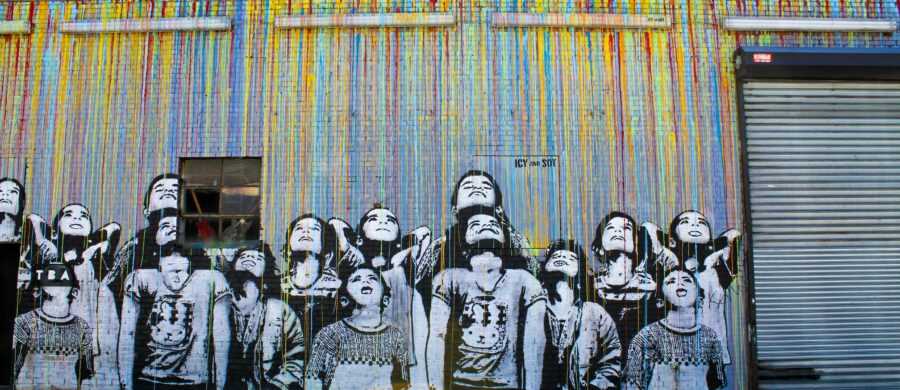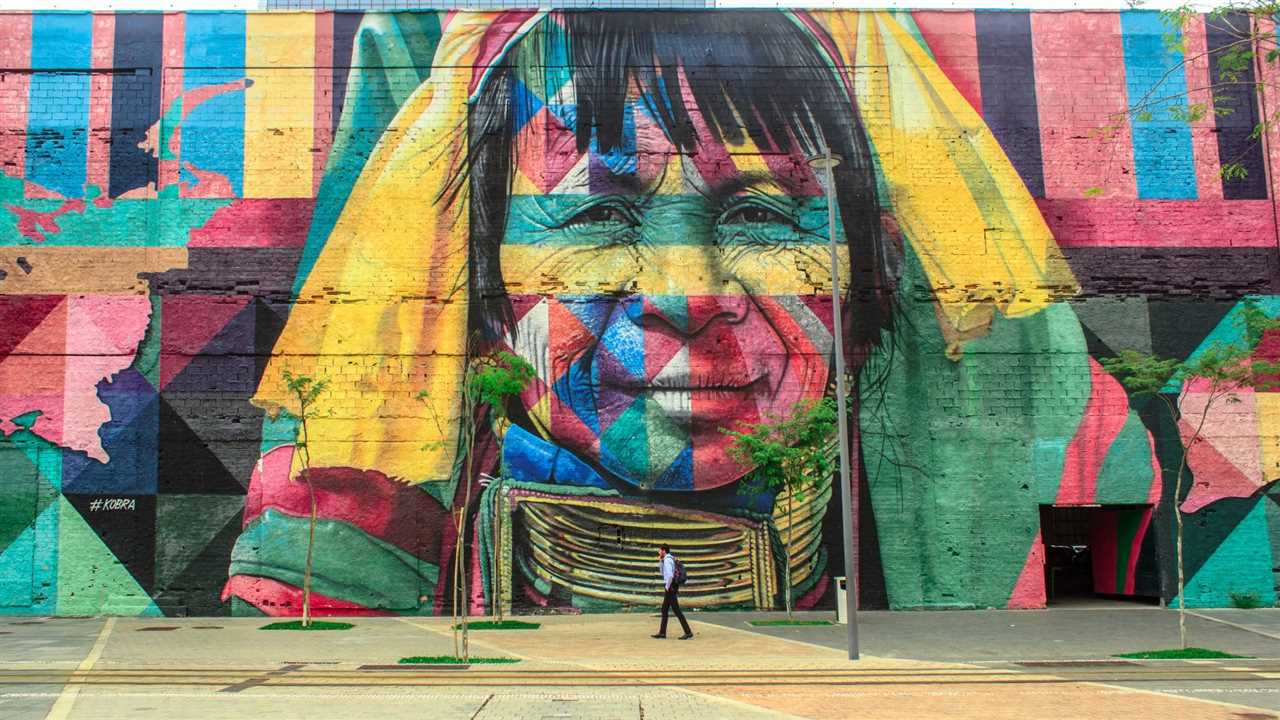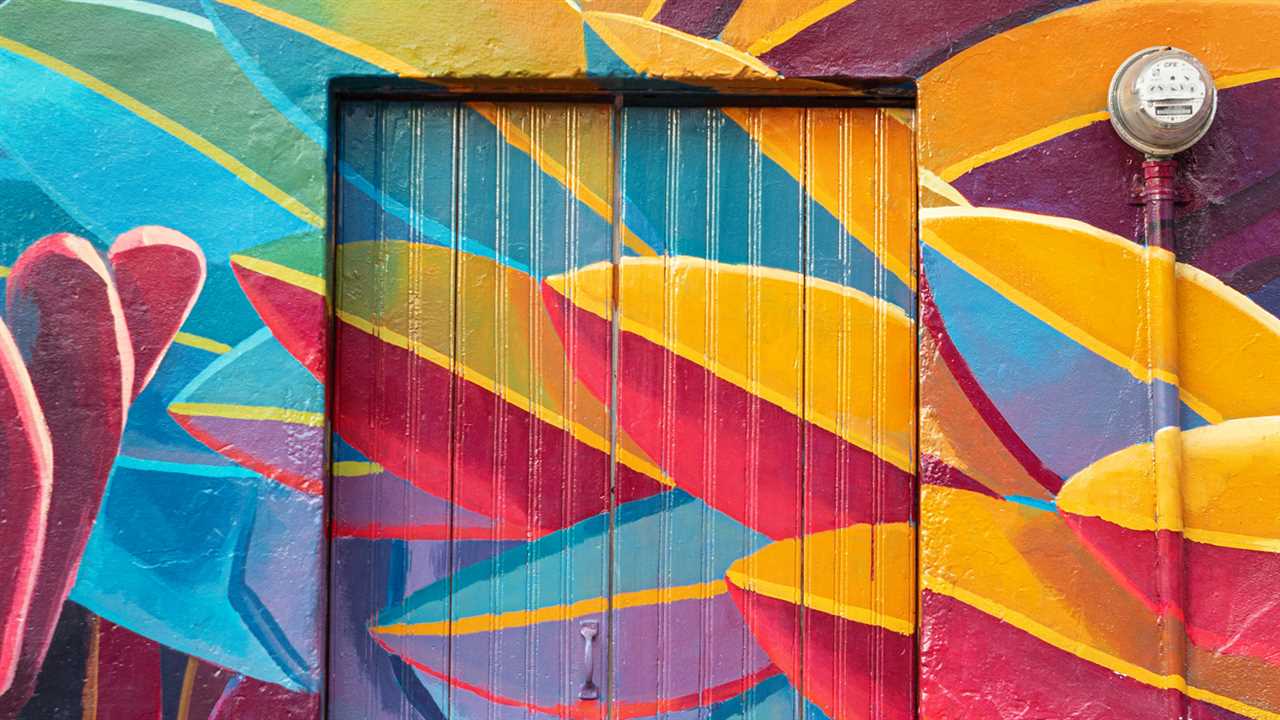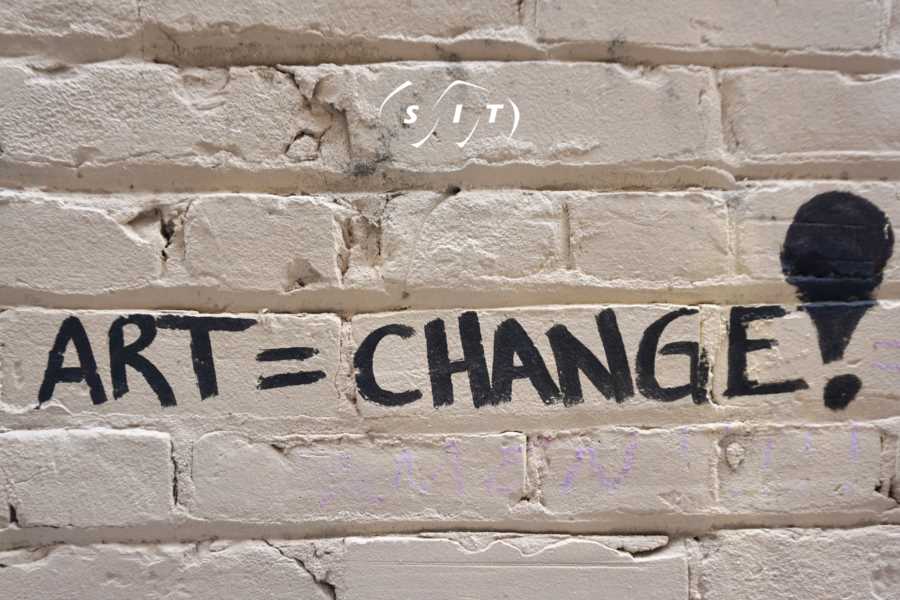
Urban art is an ever-evolving form of expression that has taken the world by storm. From the bright and bold murals that adorn the walls of buildings to the intricate stencil designs that pop up on sidewalks, it is clear that urban art has become an integral part of the modern cityscape.
What sets urban art apart from traditional forms of art is its ability to captivate and engage with the viewer on a visceral level. Unlike a painting or sculpture displayed in a gallery, urban art is accessible to everyone. It is not confined to the walls of an establishment, but rather it spills out into the very streets that we walk on. This accessibility allows for a unique and immersive experience, as individuals stumble upon these unexpected bursts of creativity while going about their daily lives.
But urban art is not just about decoration or beautification. It serves as a reflection of the issues, concerns, and emotions of the people who call these urban landscapes their home. Graffiti tags may be seen as acts of rebellion or political statements, while elaborate street murals can convey messages of unity, hope, and identity. As the urban environment evolves, so too does urban art, adapting to the changing face of the city and the people who inhabit it.
Street art is a powerful form of expression that has become an integral part of urban culture. It represents the vibrant and dynamic nature of city life, with its diversity, energy, and constant change.
Exploring Urban Spaces

Street art allows artists to interact with the urban landscape, transforming ordinary city spaces into captivating visual experiences. It serves as a means for individuals to reclaim public spaces and express their ideas, beliefs, and emotions.
Through street art, artists can communicate their opinions on social and political issues, making public art a platform for dialogue and reflection among city dwellers. It challenges the traditional boundaries of artistic expression and engages the community in thought-provoking conversations.
Pushing Creative Boundaries
Street art is not confined to the conventional art world; it defies institutional norms and reaches a broad and diverse audience. This accessibility allows for a more democratic form of artistic expression, blurring the lines between the artist and the spectator.
In addition to its accessibility, street art often incorporates unconventional techniques and materials. Artists utilize stencils, spray paint, stickers, and various other tools to create visually stunning and intricate works. This experimentation pushes the boundaries of what is considered “art” and challenges the viewer’s perception of creativity.
Street art serves as a representation of the urban landscape and the people who inhabit it. It reflects the ever-changing nature of cities and the constant reinvention of urban spaces. Through street art, artists bring vibrancy, diversity, and a fresh perspective to city streets.
Graffiti and Tags: The Raw Elements of Urban Art
When walking through the vibrant streets of a city, it is impossible to miss the bold and colorful expressions of graffiti and tags that adorn walls and buildings. These raw elements of urban art are not just random acts of vandalism, but a powerful form of self-expression and creativity.
Artistic Rebellion
Graffiti and tags are often seen as acts of rebellion against the conventional norms of society. Artists use these elements to make a bold statement, challenge authority, and claim ownership of the public spaces they adorn. By taking their art to the streets, artists are able to reach a wider audience and bring art to the everyday lives of people.
Graffiti and tags also provide a voice to those who may feel marginalized or unheard. Through their art, artists can express their thoughts, feelings, and frustrations about social, political, and economic issues. These raw elements of urban art serve as a visual representation of the collective voice of a community.
The Power of Self-Expression
For many urban artists, graffiti and tags represent a form of personal expression and freedom. It allows them to break free from traditional art forms and express themselves in ways that may otherwise be restricted. These raw elements provide a canvas for artists to experiment with colors, shapes, and typography, pushing the boundaries of traditional art and creating their own unique styles.
The ephemeral nature of graffiti and tags is also an important aspect of their power. Unlike traditional art forms, which are typically preserved in museums and galleries, graffiti and tags exist in the public domain, subject to scrutiny and removal. This transience only adds to their allure and the sense of rebellion associated with them.
Urban Art: Amplifying the Voice of Urban Creativity

Unlike traditional forms of art that are often confined to galleries or museums, urban art is a constant presence in our everyday lives. It can be found on the sides of buildings, on subway trains, and even on the pavement. This accessibility allows urban art to have a direct impact on the communities it is a part of.
Breaking Down Barriers
Urban art has the unique ability to break down barriers between different social groups and bring people together. By transforming public spaces into vibrant artistic expressions, urban art creates a sense of belonging and fosters a shared sense of identity among the residents of a city.
Through murals, graffiti, and street installations, urban art becomes a tool for social and political activism, allowing artists to have a voice and raise awareness about important issues. It challenges the status quo and sparks conversations that may not have otherwise occurred.
Celebrating Diversity and Culture

One of the most beautiful aspects of urban art is its celebration of diversity and culture. In a world that is becoming increasingly globalized, urban art provides a platform for artists to showcase their unique perspectives and celebrate the colorful tapestry of humanity.
Whether it’s a mural depicting scenes from a local neighborhood’s history, or graffiti that fuses different artistic styles and cultural influences, urban art serves as a visual reminder of our shared humanity and the rich tapestry of stories that make up a city.
Urban art allows artists to reclaim public spaces and turn the city into an ever-changing canvas that reflects the creativity and diversity of its residents. It amplifies the voice of urban creativity and inspires us to see the world in new and exciting ways.
So next time you’re walking down the street, take a moment to appreciate the urban art that surrounds you. It’s a powerful form of expression that has the ability to transform our cities and amplify the voices of the artists who create it.
The Beauty of Urban Expression: Art that Transforms Cities

From stunning murals covering the sides of buildings to intricately designed graffiti on alleyway walls, urban art brings life and energy to urban spaces. These artistic expressions come in various forms, from large-scale installations to smaller, hidden gems tucked away in unexpected corners.
One of the fascinating aspects of urban expression is its ability to reflect the diversity and culture of a city. Artists draw inspiration from their surroundings, channeling the unique essence of a place into their art. The result is a colorful and dynamic reflection of the city’s character for all to see and appreciate.
Furthermore, urban expression is often a platform for social commentary, allowing artists to communicate their thoughts and opinions on relevant issues. Whether it’s addressing political topics, advocating for social justice, or sparking conversations about environmental concerns, urban art serves as a visual voice, demanding attention and provoking discussion.
The beauty of urban expression lies not only in the artwork itself but also in the way it interacts with its surroundings. The juxtaposition of art against the urban landscape creates a powerful contrast that catches the eye and stirs the imagination. Urban art has the unique ability to make us pause, to appreciate our surroundings, and to see beauty in unexpected places.
Ultimately, urban expression is a testament to the power of creativity and its ability to transform spaces and evoke emotions. It brings a sense of wonder and excitement to the city streets and reminds us of the endless possibilities for artistic expression.
So next time you find yourself walking through a city, take a moment to appreciate the beauty of urban expression. Look for the hidden masterpieces that adorn the walls or stumble upon an unexpected installation. Let the art ignite your senses and open your mind to the boundless creativity that urban spaces have to offer.

I am a mural enthusiast and a fervent admirer of street art. Rather than creating murals myself, I am passionate about collecting them. My love for street art knows no bounds. I am dedicated to curating and cherishing these artworks that grace the streets. My collection stands as a testament to my profound appreciation for this form of artistic expression.
read about me



